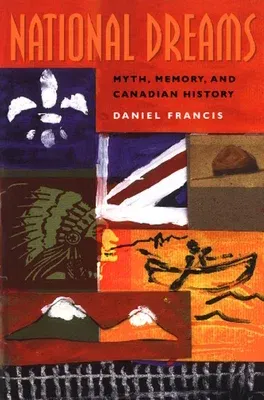As Canadians, we remember the stories told to us in high-school history
class as condensed images of the past--the glorious Mountie, the
fearsome Native, the Last Spike. National Dreams is an incisive study
of the most persistent icons and stories in Canadian history, and how
they inform our sense of national identity: the fundamental beliefs that
we Canadians hold about ourselves. National Dreams is the story of our
stories; the myths and truths of our collective past that we first
learned in school, and which we carry throughout our adult lives as
tangible evidence of what separates us from other nationalities. Francis
examines various aspects of this national mythology, in which history is
as much storytelling as fact. Textbooks were an important resource for
Francis. For me, these books are interesting not because they explain
what actually happened to us, but because they explain what we think
happened to us.
For example, Francis documents how the legend of the CPR as a
country-sustaining, national affirming monolity was created by the
company itself--a group of capitalists celebrating the privately-owned
railway, albeit one which was generously supported with public land and
cash--and reiterated by most historians ever since.
Similarly, we learn how the Mounties were transformed from historical
police force to mythic heroes by a vast army of autobiographers,
historians, novelists, and Hollywood filmmakers, with little attention
paid to the true role of the force in such incidents as the Bolshevik
rebellion, in which a secret conspiracy by the Government against its
people was conducted through the RNWMP.
Also revealed in National Dreams are the stories surrounding the
formation and celebration of Canadian heroes such as Louis Riel and
Billy Bishop.

